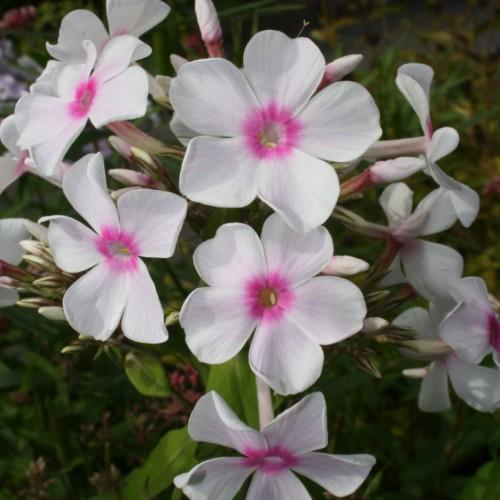
garden phlox
Phlox paniculata 'Miss Holland'
Also Known As - border phlox,common phlox,common phloxCycle:
Herbaceous Perennial
Watering:
Average
Hardiness Zone:
4 - 8
Flowers:
Flowers In Summer
Sun:
Full sun, Part sun/part shade
Soil:
Rocky , gravelly , dry, Well-drained
Fruits:
Fruits In Autumn Ready In Fall
Leaf:
Yes
Growth Rate:
High
Maintenance:
Moderate
Care Level:
Medium
watering
Garden phlox (Phlox paniculata 'Miss Holland') will do well with moderate to regular watering. During the active growing period, from spring to fall, water thoroughly when the top inch of soil feels dry. Pay special attention to keeping the soil moist in summer, as this is the period of fastest growth. Allow the soil to dry out to a depth of a few inches before watering again. Reduce watering in late fall and winter, and only water if the soil feels dry.
sunlight
Garden phlox (Phlox paniculata 'Miss Holland') thrives in full sun to light shade. It grows best in 6 to 8 hours of direct sunlight each day, particularly in the morning and early afternoon. In more northern regions, it is typically recommended that these plants receive full sun or at least very good light exposure. In southern regions, they may tolerate more shade, especially in the hot afternoon sun. Without enough light, plants may grow stretched and their flower production will decline.
pruning
Garden phlox (Phlox paniculata 'Miss Holland') should be pruned during the late winter or early spring, just before new growth begins. Pruning should be done in stages over the course of the growing season. First, cut off any dead or damaged stems. Then, reduce the height of the overall plant by cutting back the tallest stems to 1-2 feet, just above the first set of lateral buds. This will encourage bushiness and promote the development of flowering buds. Lastly, trim back the remaining stems as needed, removing any crossed, spindly, or otherwise weak stems that may be detracting from the overall plant shape.
